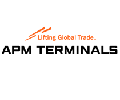No fewer than 18 of APM Terminals’ operations ranked in the top of the world’s most efficient ports index, as published recently by the World Bank and S&P Global Market Intelligence.
Keld Christensen, CEO Port of Salalah was delighted that his team were second only to one, for the second year running in the Container Port Performance Index 2022 (CPPI). “This underlines the stability and commitment to serve our customers in the best possible way,” he said, pointing to improvements in productivity of over 20% over the last five years, as well as a strong customer-centric focus throughout the entire organisation.
The ranking means that the Port of Salalah is in first position for the West Central and South Asia Region.
Top ranking for India
APM Terminals Pipavav joined in the celebrations after taking top ranking for India, again for a second consecutive year. This comes as the port continues to strengthen the country’s infrastructure and reduce logistics costs.
Elsewhere, APM Terminals had cause to celebrate, including at Colombia’s Cartagena port, placed 5th, flanked by Tanger-Med at 4th and Tanjung Pelepas at 6th place. Other APM Terminals ports featuring in the top ten are China’s Guangzhou and Egypt’s Port Said. Just outside the top 20 positioning is Buenaventura, Colombia, hot on the heels of Tianjin (20), Alecira (16) Yokohama (15) and Cai Mep (12), all of which are key APM Terminals’ locations.
Reduced port stay pledge
The report will make happy reading for APM Terminals’ leaders who committed to reduce average port stay reduction by 20% in 2023 compared to 2021 and achieve a 30% reduction by 2025 worldwide.
While the CPPI does not mention decarbonisation directly, the choice of using port stay to evaluate success is significant, since this is a major indicator in the limitation of emissions.
APM Terminals’ shipping line customers benefit from cost savings resulting from efficient operations that lead to reduced bunker consumption.
Decarbonisation commitment
In support of its decarbonisation objectives – to be fully net zero by 2040, and to reduce total emissions by 70% by 2030 compared to 2020 – APM Terminals’ is increasingly providing integrated supply chain data and specific berthing windows.
This data enables shipping companies to adjust their fuel consumption and speed, to optimally time arrival at port. Accurate berthing windows facilitate slower onward steaming speeds, improved reliability and lessened environmental impact.
Best performing metrics
In determining the best performing container ports in the world, the World Bank-S&P Global Market Intelligence collect time stamps from 10 of the world’s largest liner shipping companies, which collectively operate almost 80 percent of global container shipping.
According to the CPPI, its report is intended to “serve as a reference point for improvement for key stakeholders in the global economy, including national governments, port authorities and operators, development agencies, supranational organizations, various maritime interests, and other public and private stakeholders in trade, logistics, and supply chain services.
“The performance of a port may be assessed based on a myriad of measurements, such as: terminal capacity or space utilization, cost, landside connectivity & services, or ship to shore interchange.” However, the CPPI has based its calculations on time at port.
Essential for emerging economies
The body notes that “Container ports are critical nodes in global supply chains and essential to the growth strategies of many emerging economies. In numerous cases, the development of high-quality container port infrastructure operating efficiently has been a prerequisite for successful export-led growth strategies.”
It goes on to say that “efficient, high quality port infrastructure can facilitate investment in production and distribution systems, engender expansion of manufacturing and logistics, create employment opportunities, and raise income levels.”
Source: Hellenic Shipping News






